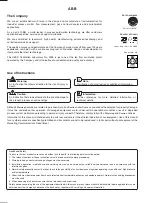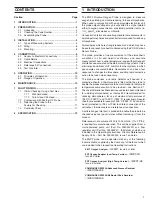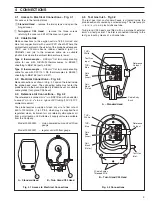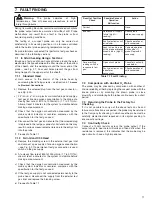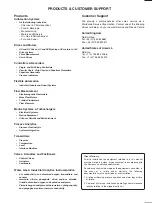
10
Normal Operation
Pt/Pt 13% Rh Thermocouple
NiCr/NiAl
Thermocouple
Non-Carburizing
Atmospheres only
400
600
800
1000
1200
1250
1400
150
100
50
Kilocalories
Probe Output
(mV)
1500
500
1000
Degrees Celsius
Electronic Conduction
Errors
Probe
Life
Reduced
High
Resistance
752
1400
1700
2552
Degrees Fahrenheit
1112
2000
2282
5
OPERATION
6
MAINTENANCE
5.1
Principles of Operation
The ZGP2 probe contains a high temperature oxygen
concentration cell using zirconium oxide as a solid electrolyte.
Inner and outer electrodes are attached to the cell which is
specific to oxygen.
Air is supplied to the inner reference electrode to provide a
constant partial pressure of oxygen while the process gas to
be measured is in contact with the outer electrode.
A voltage is generated across the electrodes which is a
function of the ratio of the oxygen partial pressures at the two
electrodes. This voltage output represents ‘oxygen potential’
and can be used to control the atmosphere of annealing
processes etc.
For the measurement of ‘oxygen concentration’ it is necessary
to correct for absolute temperature of the probe. The
temperature term in the Nernst equation, on which the voltage
output depends, illustrates this point:
E = 0.0496 T (log
10
P
0
/P
1
) + C mV
Where:
T
= Absolute Temperature (
°
K)
P
0
= Partial Pressure Reference Gas
P
1
= Partial Pressure Sample Gas
C = Cell Constant
For ‘oxygen potential’ measurement the following two
expressions relate the oxygen probe output (E mV) to oxygen
potential (
µ
)
E = (10.84
µ
+ 40) where
µ
is in kilocalories
or
E = –(2.591
µ
+ 40) where
µ
is in kilojoules
5.2
Range of Operation – Fig. 5.1
The internal resistance of the cell, i.e the resistance of the
electrolyte between the electrodes, decreases approximately
exponentially with increasing temperature and for this reason
it is recommended that the probe is used at temperatures
greater than 600
°
C (1112
°
F).
The maximum operating temperature is limited by two factors:
a) The onset of electronic conduction through the electrolyte
which reduces the measured output below its theoretical
value.
b) Evaporation of the outer electrode.
Electronic conduction is a function of both temperature and
oxygen partial pressure and, for stabilized zirconia, it occurs at
low levels of oxygen and high temperature. For the above
reasons it is recommended that the probe is used at
temperatures between 600
°
C (1112
°
F) and 1250
°
C (2282
°
F) –
see Fig. 5.1. [900
°
C (1652
°
F) max. for Type K thermocouple].
Caution.
No maintenance is necessary, or
possible, on the probe and any attempt to dismantle it
could cause irreparable damage. The probe can be tested
for accuracy whilst connected to its measuring system but
without removal from its operating position.
It is recommended that at least one spare probe is held for
replacement or comparison purposes.
Fig. 5.1 Range of Operation


